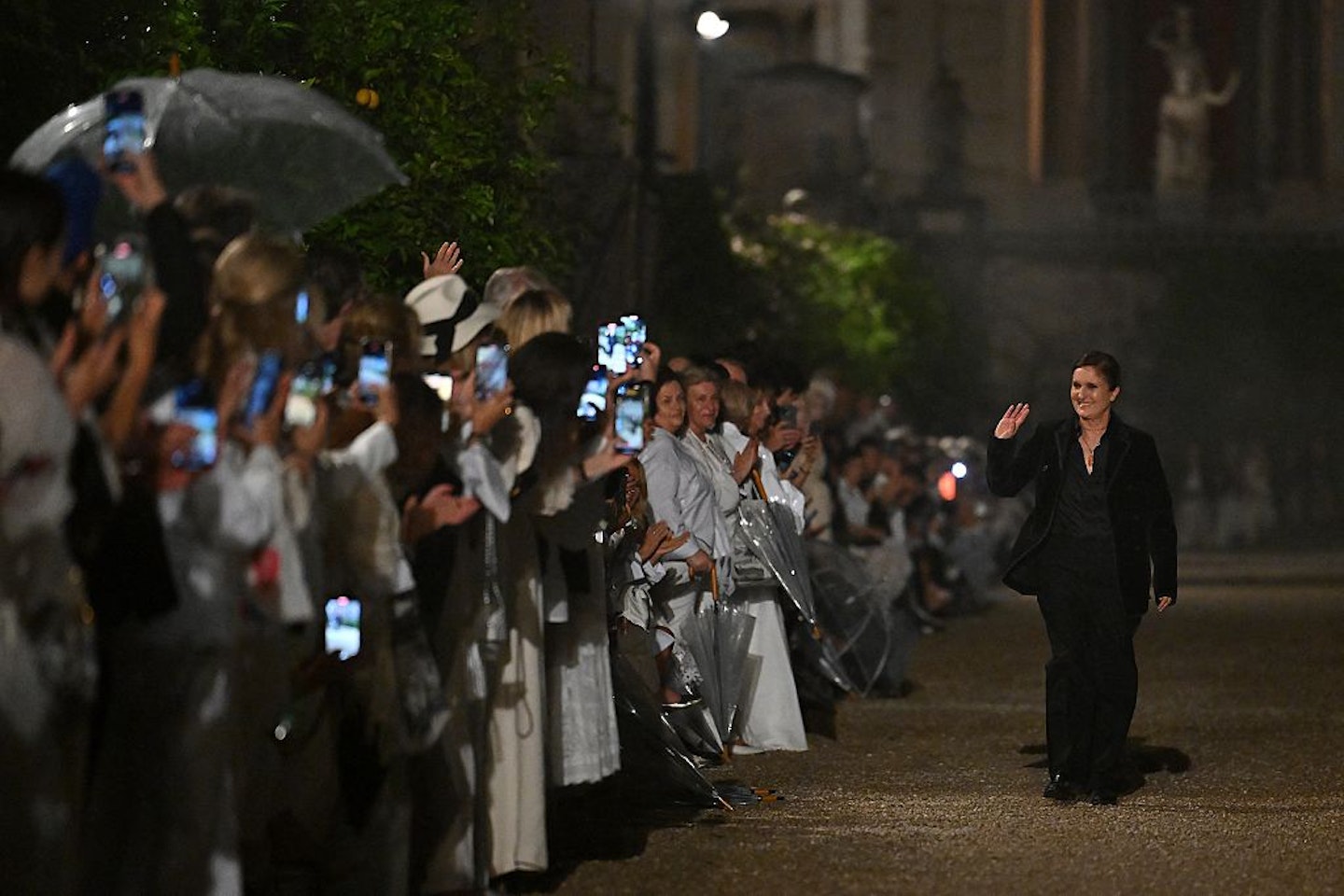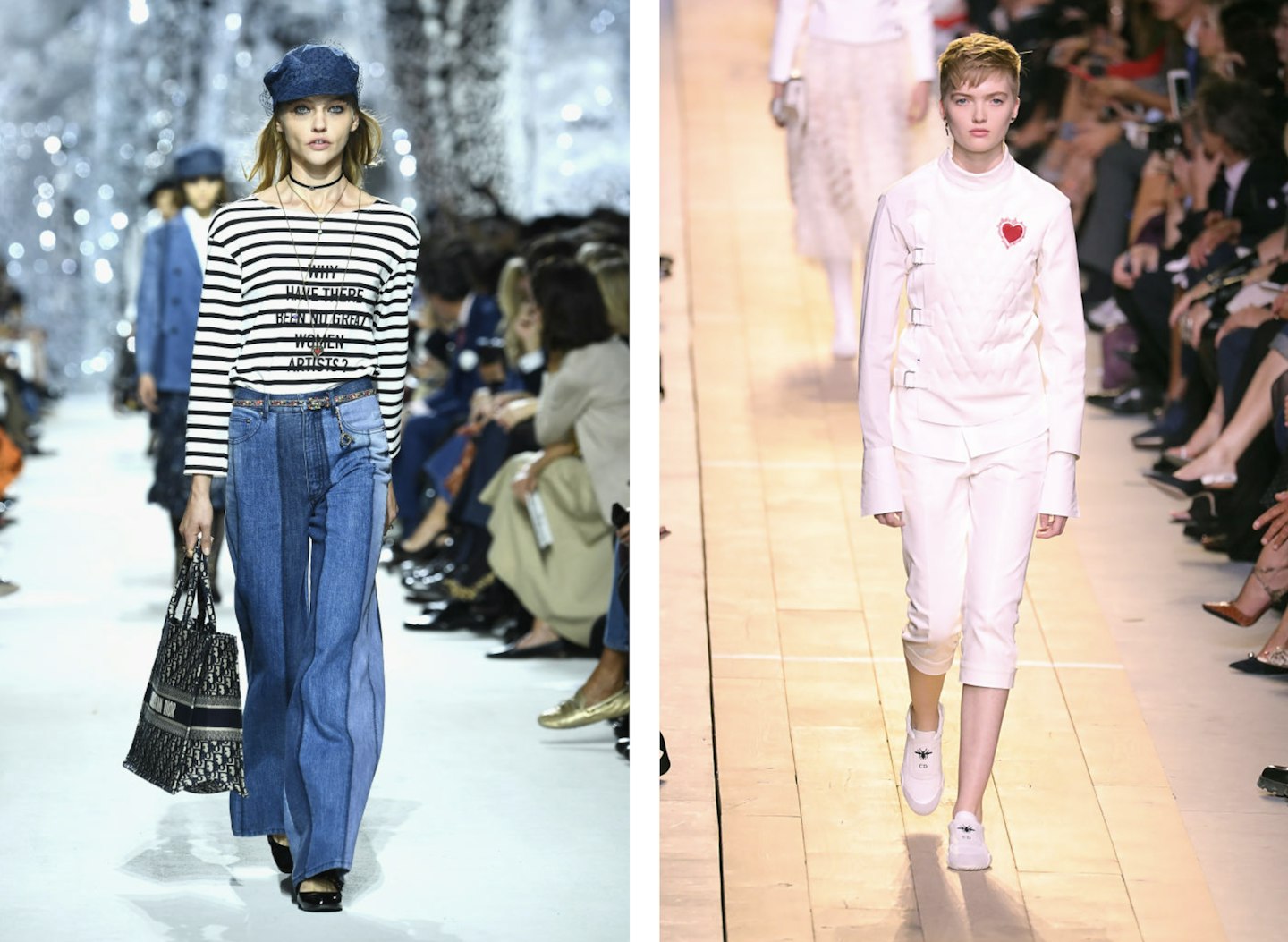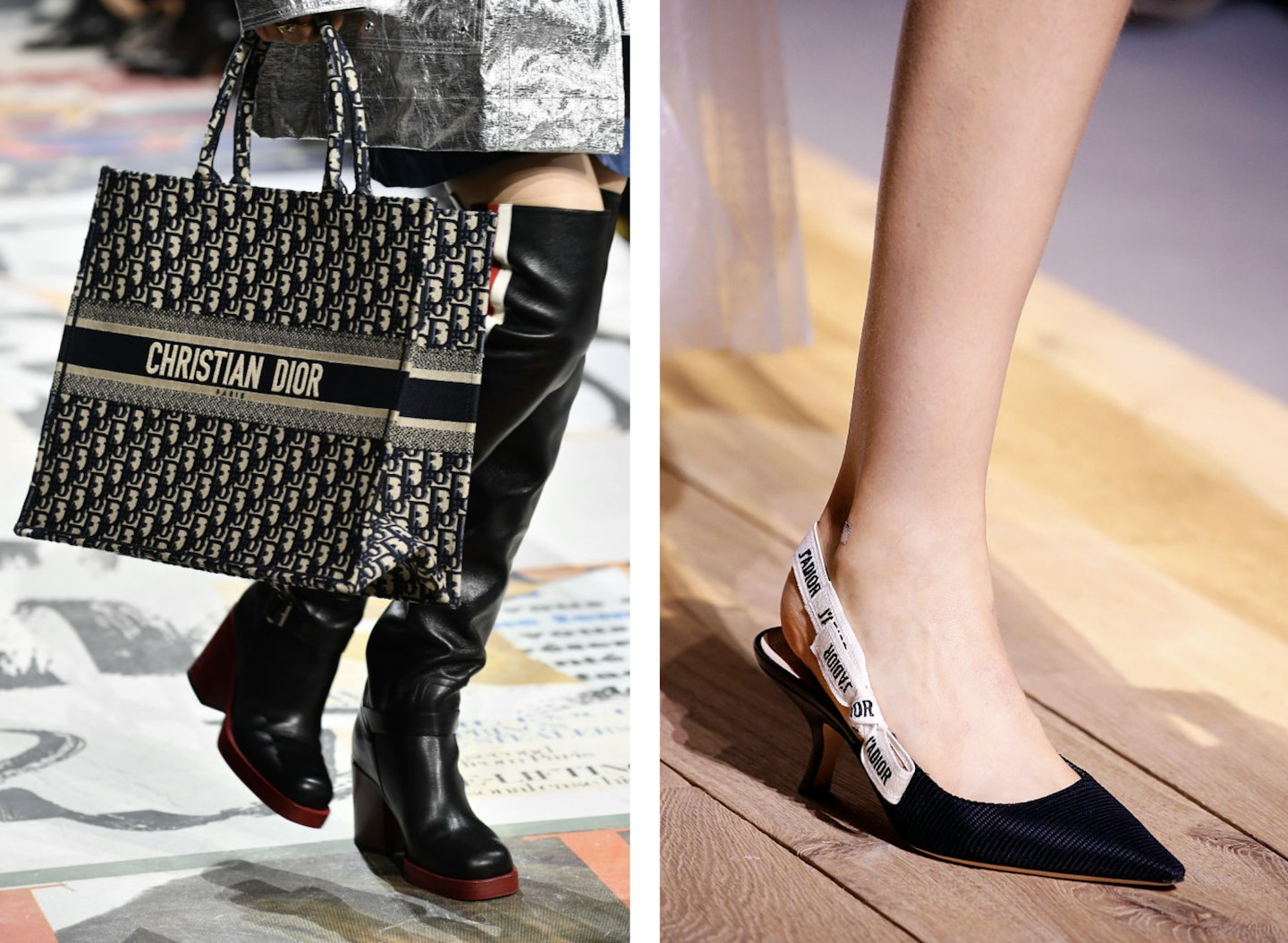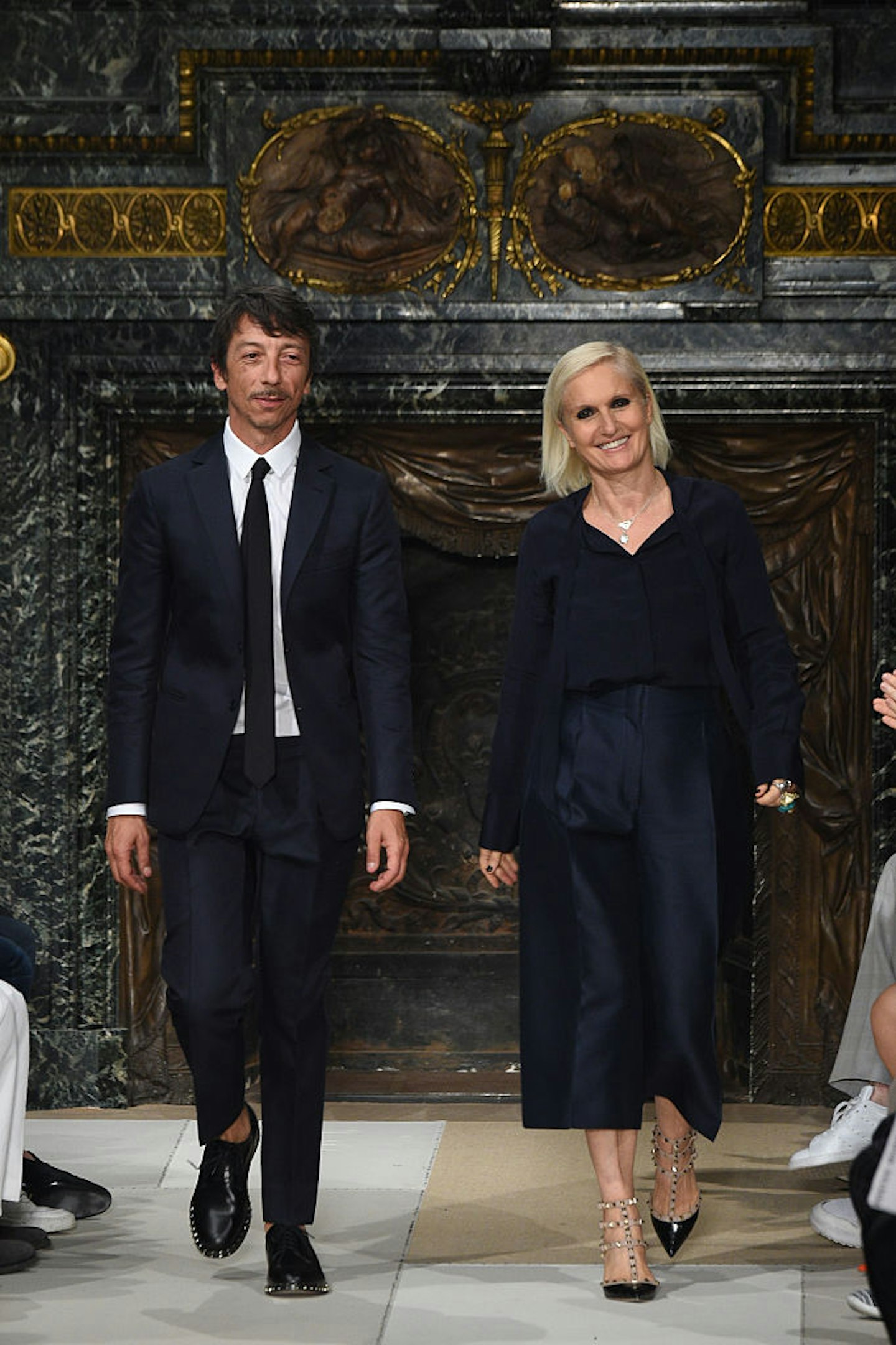The first woman to take creative control of Dior. The first woman to co-direct Valentino. She was, until this week, one of two female creative directors in the corporate megabrand couture world.
Maria Grazia Chiurireceived a standing ovation in Rome earlier this week when she took her final curtain call; an emotional and respectful moment, in what had been months, some might say years, of deafening whispers about the security of her position. This had nothing to do with ability: she quadrupled sales at Dior during her nine-year tenure.

At a moment in fashion history where the latest round of musical chairs, resembles a kind of grand designer game of chess that can only be played by a who’s who of white middle-aged men, MGC’s departure feels even more symbolic; more than ever, she has become a figurehead of feminist power – or lack thereof.
Chiuri’s creative control at Dior was always as much about feminism as it was fashion. She bolted out of the gates with luxury Breton t-shirts bearing slogans from feminist literature. Anything emblazoned with ‘We Should All Be Feminists’ and ‘Why Have There Been No Great Women Artists?’ are, no doubt, about to see their value shoot up on resale sites.
She has put her models in fencing suits, boiler suits, factory boots and revolutionist leather berets. Her fashion shows have often placed physical displays of female strength centre stage. There was the all-female band of Mexican rodeo riders, the escaramuzas, who performed daredevil stunts on horseback at full gallop; the troupe of acrobats who made human skyscrapers by standing on each other’s shoulders to demonstrate female solidarity; the powerful flexibility of the Tel Aviv ballet who pirouetted their way around models to better demonstrate the idea of one’s personal space; the pounding heels of a flamenco dance troupe. Let’s not forget the set that resembled a birth canal by feminist artist Judy Chicago, who asked: ‘If women ruled the world, would buildings resemble wombs?’

With every collection, in fact, MGC thrust feminist issues in the face of her audience – that’s a global audience of multi-millions. Like it or not, she raised questions. You may think she ‘womansplained’ her message, or you may have internally fist-pumped the air at the audacity of putting it all front and centre at a Parisian haute couture show. Whether you approved or disapproved of the commercialisation of the feminist cause, that’s your business.
Meanwhile, the Dior business (and I just love to imagine the confusion of the Parisian patriarchy, wincing at all the wombs one minute while blinking disbelievingly at the balance sheet the next) witnessed sales soar in a way that they had done so before. Not with Christian Dior, his protégé Yves Saint Laurent, his successor Marc Bohan, Gianfranco Ferré, even John Galliano or Raf Simons.

It was only MGC, seventh in line to the Dior throne, first woman at the brand, who brought home such commercial success. Christian Dior doesn’t split womenswear from menswear so it’s impossible to know her true commercial value, but according to the Business of Fashion, Chiuri’s tenure became a ‘significant contributor to LVMH’s bottom line’; at least, the combined efforts of Chiuri’s womenswear and Kim Jones’ menswear topped euros 9 billion in 2023, before falling slightly last year.
So what made her Dior so commercially superior? And why did women keep coming back for more? Perhaps this is the most feminist thing about MGC: she didn’t issue diktats; she listened. Her formula was, in a way, simplistic: she delivered clothes that women around the world wanted to wear – and, believe it or not, that’s not easy.
Romantic dresses, supple tailoring, little of which ever screamed a season. A Dior customer could build up their wardrobe incrementally or buy three of the same thing in different colourways or fabrics. She developed iconic MGC totems – from ballet flats to Bar jackets. She reissued Galliano’s saddle bags and created the wildly popular Dior monogrammed Book Totes and the myriad leather Dior Toujours bags and J’Adior slingbacks. All of it flattering, not avant-garde; everyday special, not costume.

The A-list, of course, clamoured to wear Dior because why not look like your best self, when it matters most on a red carpet? Yes, that’s you Anya Taylor-Joy, Jenna Ortega, Ashley Park, Jennifer Lawrence and Natalie Portman.
Of course, we talk about Maria Grazia Chiuri as if she just arrived as a designer when she entered the hallowed portals of Dior. This is not the case. Born and raised in Rome to a mother who was a seamstress, she studied fashion at a traditional Italian school of fashion ‘that only talked about heritage, craftsmanship, sketching – not about fashion as an important impact on society’, she once told me. In other words, she learned the craft of making clothes early; any societal impact would come later. Her first job was at Fendi, run by five sisters so no need to shout about feminism there. She joined Valentino in 1999 as head of accessories (hence the always great bags) and became joint creative director with Pierpaolo Piccioli in 2008, where she and he consistently topped the couture charts. It was in 2016 that she landed her appointment as the first women’s director of Dior.

What will the fashion consumer make of MGC’s departure? Will they think of it as a loss? Will they miss the Dior look she created? Will they even care?
Certain members of the female press corps may be wringing their hands in despair at the sheer lack of female artistic directors and, besides, they enjoyed wearing the oh-so-flattering clothes, bags and shoes. But they will have to move on – just like the 78-year-old Dior brand.
You never know MGC might also leap to another brand. She’s only 61. Karl Lagerfeld continued to work until he died, aged 85.
‘I am just me, Maria Grazia. I am not so obsessed with the idea that I am a woman designer,’ she told me back in 2019. She might feel very differently now – and with good reason. Whatever she does next, Maria Grazia Chiuri will always be remembered as a fashion gamechanger in an industry that, more than ever, seems to look more favourably on the efforts of men.
Rebecca Lowthorpe worked as fashion director for Grazia from 2016 to 2019; she is currently Grazia’s acting assistant editor, overseeing fashion and beauty content.
